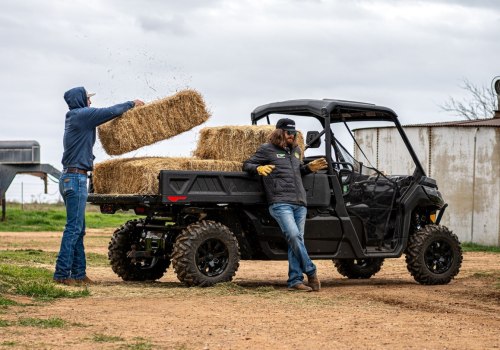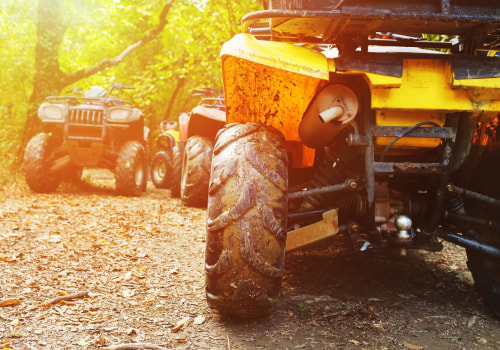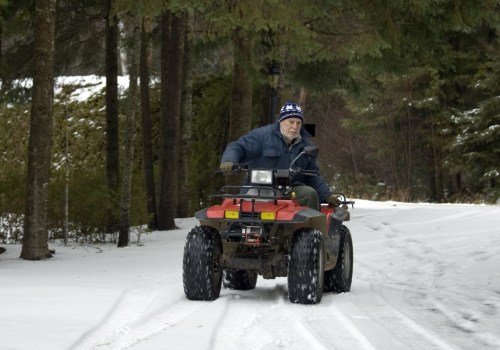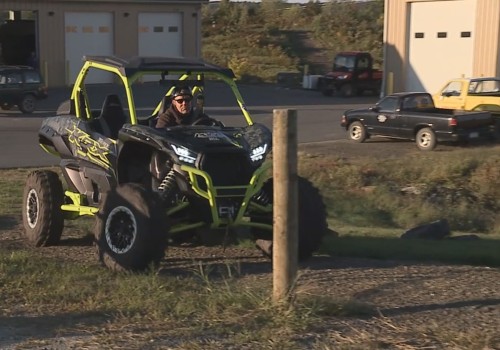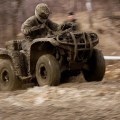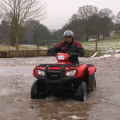No special equipment or safety inspection is required to own or operate an All Terrain Vehicle (ATV). It is illegal to operate off-road vehicles in public places. According to Ark. Ann Code, no person between 14 and 16 years old can operate an ATV with an engine capacity greater than 90 cubic centimeters.
However, a person between 14 and 16 years old can operate an ATV with an engine capacity equal to or less than 90 cubic centimeters if it is directly supervised by a person 18 years of age or older. No person may operate an ATV on private property unless they own or are directly related to the owners, or without the permission of the owners. Similarly, no person may operate an ATV on publicly owned property, except on trails marked and designated for use by such vehicles, or without the express permission of the owner, as per Mass. regulations.
For safety reasons, all ATVs must be equipped with at least one red taillight that has a minimum sail power of sufficient intensity to be clearly visible from a distance of five hundred feet backwards under normal weather conditions during hours of darkness. Additionally, all ATVs must be equipped with a silencer system capable of preventing the emission of excessive smoke or exhaust gases and of limiting vehicle engine noise. The Wisconsin Department of Transportation (WisDOT) requires the installation of a paved platform where an ATV trail connects to the road of a state highway. This is necessary to avoid maintenance problems, such as gravel or mud deposits on the road surface, and to reduce the risk of damaging the wing blades when plowing snow.
WisDOT may waive or temporarily suspend this requirement if appropriate. The U. S. Forest Service has identified unregulated off-road vehicles (ORVs) as the source of the main harmful impacts on national forests.
Therefore, a person aged sixteen or younger who drives an ATV on public land must be accompanied by an adult. Children under 12 years old cannot drive an ATV with 4 or more wheels, unless the child is not younger than 10 years old and is on private land owned by a parent or legal guardian of the child, unless engaged in an agricultural activity. A licensed motor vehicle driver can cross a public road if the ATV is equipped with a properly functioning silencer, brakes, headlights, and taillights. No person may operate an ATV on private property without the consent of the owner of the property and the person who has a contractual right to use the property.
In 1973, Honda registered the term All Terrain Cycle (ATC), applying the nickname to all three-wheeled all-terrain vehicles manufactured by Honda and creating the universal name that is now associated with all vehicles of this type. The driver sits in these vehicles and drives them like a motorcycle, but the additional wheels provide more stability at slower speeds. No person may operate a snowmobile or recreational vehicle on any state, county, city, or town road in the Commonwealth, or on the plowed snow banks of those roads, or on any other public road, or on the limits of the right-of-way of a controlled-access highway, unless they cross those roads or under emergency conditions that prevent regular motor vehicle traffic. No person may drive a motor vehicle off the road at a speed greater than is reasonable or prudent and, under no circumstances, at a speed that endangers the safety of other persons or property.
Off-road vehicles are mainly treated like a normal car in Germany, which means that a special license is not needed for vehicles or motorcycles. This does not apply if the vehicle is used for agricultural or forestry operations, or if it is used on land owned by the vehicle owner. It's important to remember that all recreational vehicles must be equipped with at least one rear light mounted so that it is visible from the rear of the vehicle. All ATVs must also be equipped with one or more headlights, a red rear light, all in good condition, and brakes in good mechanical condition; they must also be equipped with an efficient silencer and other equipment and devices that are necessary to meet noise level specifications.
If equipped with a windshield, they must not have sharp or serrated edges.
